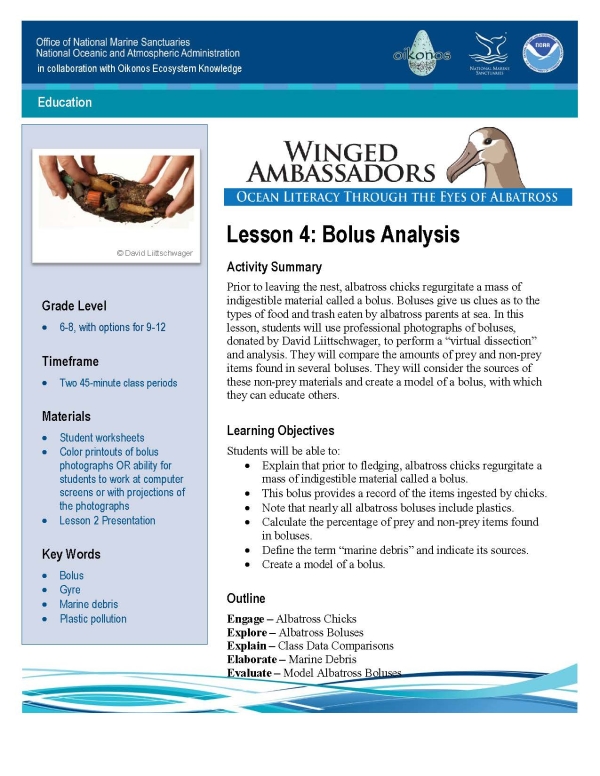
The classroom activity package Winged Ambassadors – Ocean Literacy through the Eyes of Albatross is available free online courtesy of Oikonos, in partnership with NOAA’s Cordell Bank National Marine Sanctuary and Papahānaumokuākea Marine National Monument.
Albatrosses, charismatic and threatened seabirds, are ambassadors for a clean ocean because they traverse vast oceanic regions searching for floating food. Along their journeys, they ingest plastic trash and feed it to their chicks. These lessons comprise new and modified activities, using inquiry-based science instruction, aligned to new standards for grades 6 – 8 with extensions for grades 9 – 12.
Bolus Analysis- After completing this lesson, students will be able to explain that prior to fledging, albatross chicks regurgitate a mass of indigestible material called a bolus and note that nearly all albatross boluses include plastics. They will be able to calculate the percentage of prey and non-prey items found in boluses. In addition, students will define the term “marine debris”, indicate its sources, and create a creative model of a bolus.
Download supporting materials, including worksheets, presentations, and interactive digital bolus analysis, here.
Winged Ambassadors is made up of five units that explore how scientists study these magnificent seabirds at sea and how satellite tracking tells us about their habitat needs. Explore the entire activity package for free at www.downloadwingedambassadors.org.
 An official website of the United States government.
An official website of the United States government. 